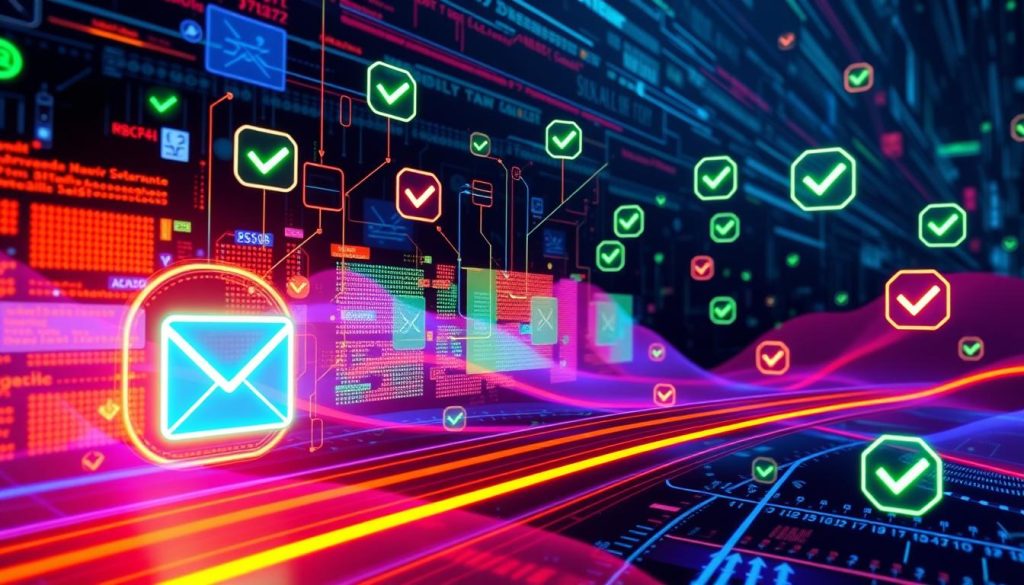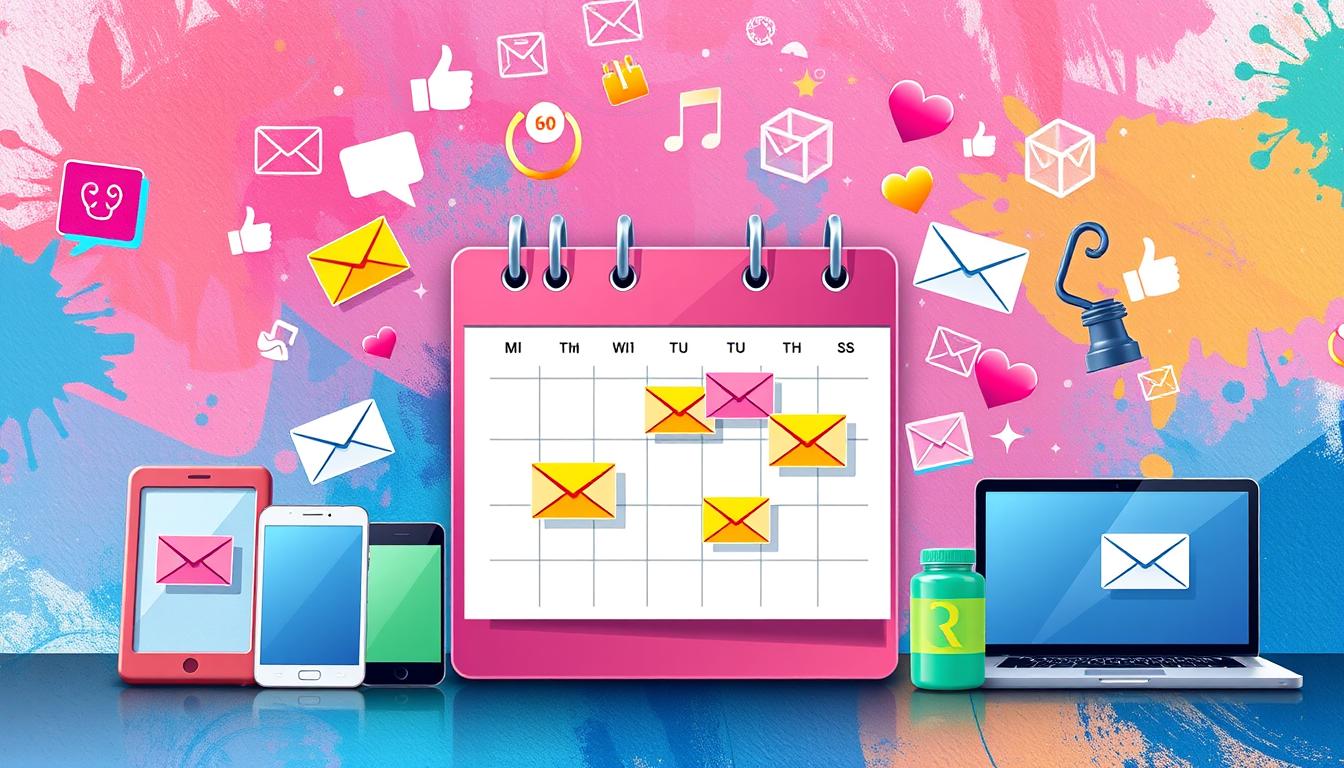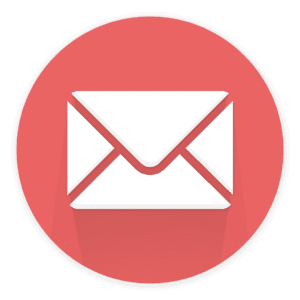In the ever-evolving world of eCommerce, effective email marketing has become a crucial component of any successful business strategy. Striking the right balance between engaging customers and avoiding email fatigue is a delicate dance that can make or break your brand’s reputation and sales. This article will explore the best practices for optimizing eCommerce email marketing frequency, equipping eCommerce businesses with the insights and tactics needed to create a personalized and compelling email experience that drives customer retention, boosts sales, and fosters long-term loyalty.
Key Takeaways
- Understand customer preferences and implement subscriber segmentation strategies to deliver personalized email content
- Optimize email sending frequency to avoid customer fatigue and maintain engagement
- Leverage welcome and onboarding campaigns to set the right tone and introduce your brand
- Strategize promotional offers and sales emails to drive conversions without overwhelming customers
- Utilize abandoned cart emails to re-engage potential customers and recover lost sales
- Implement customer retention and loyalty programs to foster long-term relationships
- Optimize email deliverability and maintain a positive sender reputation
Introduction to eCommerce Email Marketing
In the dynamic world of eCommerce Email Marketing, businesses have a powerful tool to connect with their customers, drive sales, and foster brand loyalty. By leveraging personalized email campaigns, eCommerce companies can effectively reach their target audience, promote products and services, and nurture customer relationships throughout the buyer’s journey.
The importance of Email Communication Strategies in the Digital Marketing for eCommerce landscape cannot be overstated. Email marketing allows businesses to deliver tailored messages, offer exclusive promotions, and maintain an ongoing Omnichannel Customer Engagement with their customers.
This section will provide an overview of the key benefits and best practices of email marketing for eCommerce businesses, setting the stage for a deeper exploration of strategies to optimize email frequency and maximize customer engagement.
The Power of Email Marketing for eCommerce
Email marketing stands out as a highly effective and cost-efficient digital marketing channel for eCommerce businesses. Some of the key benefits of leveraging email campaigns include:
- Targeted and personalized communication with customers
- Increased brand awareness and customer loyalty
- Driving sales and revenue through targeted promotions and offers
- Nurturing customer relationships throughout the buyer’s journey
- Gathering valuable customer data and insights
By seamlessly integrating email marketing into their overall Digital Marketing for eCommerce strategy, businesses can create a powerful Omnichannel Customer Engagement and enhance their competitive edge in the dynamic eCommerce landscape.
“Email remains one of the most effective digital marketing channels for eCommerce businesses, delivering an average return on investment of $36 for every $1 spent.” – Email Marketing Industry Report
Understanding Customer Preferences
Effective eCommerce email marketing hinges on a deep understanding of customer preferences and behaviors. By segmenting your subscriber base and tailoring email content and frequency to individual customer needs, you can create a more personalized and engaging experience. This section will explore strategies for subscriber segmentation, drawing insights from demographic data, purchase history, and browsing behavior to help eCommerce businesses deliver relevant and targeted email communications that resonate with their audience.
Subscriber Segmentation Strategies
Segmenting your email subscribers is a crucial step in delivering Personalized Email Campaigns that drive Subscriber Engagement. Consider the following strategies to enhance your Audience Targeting and Data-Driven Marketing efforts:
- Demographic Segmentation: Divide your subscribers based on factors like age, gender, location, and income level to better understand their unique preferences and tailor your messaging accordingly.
- Behavioral Segmentation: Analyze subscriber activities, such as purchase history, browsing behavior, and engagement levels, to identify patterns and segment your audience into distinct groups.
- Psychographic Segmentation: Delve into your subscribers’ interests, values, and lifestyle choices to create more personalized and resonant email campaigns.
- Lifecycle Segmentation: Group subscribers based on their stage in the customer journey, from new leads to loyal advocates, and adapt your messaging to their evolving needs.
By implementing these Customer Segmentation strategies, eCommerce businesses can unlock the power of personalization and deliver email content that truly resonates with their audience, driving increased engagement and conversions.
“Segmentation is the foundation of effective eCommerce email marketing. By understanding your customers’ unique preferences, you can create a personalized experience that fosters deeper engagement and loyalty.”
Best Practices for eCommerce Email Marketing Frequency
Finding the optimal email sending frequency for your eCommerce business is a delicate balance. Sending too many emails can lead to subscriber fatigue and increased unsubscribe rates, while sending too few can result in missed opportunities for customer engagement and sales. To help eCommerce marketers navigate this challenge, let’s explore some best practices for determining the right email cadence.
One of the key factors to consider is your subscribers’ preferences. Regularly survey your email list to understand their desired frequency and the type of content they find most valuable. This will help you tailor your email list management strategy and ensure you’re meeting their expectations.
Additionally, analyze your email marketing metrics to identify the sweet spot. Track metrics like open rates, click-through rates, and unsubscribe rates to gauge the impact of your current email frequency. If you notice a decline in engagement or an increase in opt-outs, it may be time to adjust your approach.
| Email Sending Frequency | Potential Impact |
|---|---|
| Daily | High risk of subscriber fatigue and unsubscribes |
| 2-3 times per week | Optimal for maintaining engagement and driving conversions |
| Weekly | Suitable for less time-sensitive or promotional content |
| Bi-weekly or monthly | Appropriate for educational or thought leadership content |
Remember, the ideal email sending frequency will vary depending on your industry, product offerings, and customer preferences. Continuously test and refine your approach to find the sweet spot that maximizes customer engagement and drives business growth.
Welcome and Onboarding Campaigns
In the world of eCommerce, the first impression can make or break a customer’s relationship with your brand. This is where Welcome Email Campaigns and Onboarding Email Sequence play a vital role in setting the tone for a lasting and productive partnership.
Your welcome email is the initial touchpoint with a new subscriber, and it’s crucial to get it right. This message should not only introduce your brand but also establish a sense of customer engagement and trust. By highlighting your unique value proposition, key product features, and the benefits of continued engagement, you can effectively position your brand and encourage subscribers to explore your offerings further.
Setting the Right Tone from the Start
Following the welcome email, the onboarding email sequence is designed to guide new customers through the initial stages of their journey with your eCommerce brand. These emails should be carefully crafted to maintain a consistent and positive first impressions, while also providing valuable information and a clear path for subscribers to engage with your products or services.
- Introduce key features and benefits of your products or services
- Provide step-by-step instructions on how to get started
- Highlight exclusive offers or incentives for new customers
- Encourage subscribers to connect with your brand on social media
- Gather feedback and gather insights to improve the onboarding experience
By mastering the art of welcome and onboarding campaigns, you can lay the foundation for long-lasting customer relationships and drive meaningful engagement with your eCommerce brand.
Promotional Offers and Sales Emails
Effective Promotional Email Campaigns and limited-time Sales Email Strategies are essential for driving eCommerce sales and keeping customers engaged. By leveraging a sense of urgency and crafting compelling Offer Optimization, businesses can encourage customer action and boost revenue.
When executing Limited-Time Promotions, it’s crucial to strike the right balance between promotional and informational content. Rather than bombarding customers with endless sales pitches, successful eCommerce businesses utilize Personalized Product Recommendations to showcase relevant products and offers tailored to individual customer interests.
| Best Practices for Promotional Email Campaigns | Key Strategies for Effective Sales Emails |
|---|---|
|
|
By implementing these Promotional Email Campaigns and Sales Email Strategies, eCommerce businesses can effectively leverage email to boost revenue and customer loyalty.
“The key to successful promotional emails is finding the right balance between enticing offers and providing value to your customers.”
Abandoned Cart Emails
In the dynamic world of ecommerce, abandoned cart email campaigns have emerged as a powerful strategy to recover lost sales and nurture customer engagement. By targeting shoppers who have added items to their carts but failed to complete the purchase, businesses can reinforce their value proposition, offer personalized incentives, and create a sense of urgency – ultimately driving Abandoned Cart Email Campaigns, Cart Abandonment Recovery, and improved Purchase Conversion.
Crafting an effective abandoned cart email sequence requires a strategic approach. First, businesses must identify abandoners and segment them based on factors such as cart value, product category, and customer lifecycle stage. This allows for the creation of Customer Engagement and Email Retargeting campaigns that resonate with each individual shopper.
- Trigger the first abandoned cart email within a few hours of abandonment, reminding customers of the items they left behind and encouraging them to complete their purchase.
- Follow up with a second email a day or two later, offering a limited-time discount or free shipping to provide an incentive to return and finalize the transaction.
- If the customer still doesn’t convert, a third email can be sent a few days later, emphasizing the scarcity of the product or the limited availability of the offer to create a sense of urgency.
By implementing a well-crafted abandoned cart email strategy, ecommerce businesses can effectively Abandoned Cart Email Campaigns, Cart Abandonment Recovery, and drive Purchase Conversion – ultimately boosting overall revenue and customer loyalty.
“Abandoned cart email sequences are a game-changer for ecommerce brands looking to recover lost sales and nurture customer relationships.”
Customer Retention and Loyalty Programs
In the dynamic world of eCommerce, retaining existing customers is a fundamental strategy for long-term success. By fostering a sense of loyalty and engagement, businesses can cultivate a devoted customer base that drives sustainable growth and profitability. Email marketing plays a crucial role in these Customer Retention Strategies, enabling eCommerce brands to build lasting relationships and encourage Repeat Business.
One powerful approach is the implementation of Loyalty Email Programs. These programs offer customers exclusive rewards, VIP access, and personalized content, creating a sense of community and added value. By recognizing and rewarding their most loyal patrons, businesses can increase Customer Lifetime Value and foster a culture of Engagement and Loyalty.
| Loyalty Program Benefits | Impact on Customer Retention |
|---|---|
| Exclusive Offers and Discounts | Increases customer engagement and incentivizes repeat purchases |
| Personalized Product Recommendations | Enhances the customer experience and fosters a sense of brand connection |
| Tiered Rewards and VIP Status | Motivates customers to continue engaging with the brand to maintain their preferred status |
By leveraging the power of email, eCommerce businesses can create a robust Loyalty Email Programs that keeps customers coming back, ultimately driving long-term growth and profitability.
“The true value of a loyal customer is not just in their current purchase, but in the lifetime of business they can bring to your company.”
Email Deliverability and Spam Filters
Ensuring that your eCommerce email campaigns reach the intended recipients is a critical component of successful email marketing. To maximize the impact of your email efforts, it’s essential to prioritize email deliverability and maintain a strong sender reputation.
Maintaining a Good Sender Reputation
Your sender reputation is a key factor in email deliverability. A positive reputation can help your messages bypass spam filters and land in your customers’ inboxes. To maintain a good sender reputation, focus on the following strategies:
- Implement robust email authentication measures, such as SPF, DKIM, and DMARC, to verify the authenticity of your emails.
- Practice email list hygiene by regularly cleaning your list, removing inactive or unengaged subscribers, and verifying email addresses.
- Avoid spammy content, excessive use of all-caps, or excessive use of exclamation points, which can trigger spam filters.
- Monitor your sender reputation metrics, such as spam complaints, bounce rates, and blacklisting, and address any issues promptly.
| Metric | Importance | Desired Range |
|---|---|---|
| Spam Complaints | High | Less than 0.1% |
| Bounce Rate | High | Less than 2% |
| Blacklisting | High | No blacklisting |
By maintaining a strong sender reputation and optimizing your email content and headers, you can improve your overall email deliverability and ensure your messages reach the right inboxes.

A/B Testing and Optimization
In the dynamic world of eCommerce, email marketing stands as a powerful tool for businesses to engage with their customers and drive conversions. To ensure the long-term success of your email campaigns, the key lies in continuous optimization – a process that begins with A/B testing. By meticulously testing various elements of your emails, such as subject lines, content, calls-to-action, and send times, you can harness the power of data-driven decisions to identify the most effective strategies for your audience.
A/B testing, also known as split testing, is a methodology that allows you to compare the performance of two or more variations of an email element. This approach not only helps you improve conversion rates but also provides invaluable insights into your customers’ preferences and behaviors. By analyzing the results of these tests, you can fine-tune your email marketing optimization efforts and make informed decisions that enhance the overall customer experience.
- Identify key email elements to test: Subject lines, preheader text, email content, calls-to-action, and send times.
- Develop clear hypotheses and testing strategies to measure the impact of each variation.
- Analyze the results thoroughly, taking into account metrics such as open rates, click-through rates, and conversion rates.
- Continuously iterate and refine your email campaigns based on the insights gained from A/B testing.
| Email Element | A/B Testing Approach | Metrics to Measure |
|---|---|---|
| Subject Line | Test different subject line styles, lengths, and tone of voice. | Open rate, click-through rate |
| Content | Experiment with layout, imagery, and the call-to-action placement. | Click-through rate, conversion rate |
| Send Time | Compare the performance of emails sent at different times of the day or days of the week. | Open rate, click-through rate |
By embracing the principles of A/B testing and optimization, eCommerce businesses can unlock the full potential of their email marketing campaigns, driving increased engagement, improved conversions, and enhanced customer loyalty. With a data-driven approach, you can continually refine your strategies, ensure the relevance of your content, and deliver exceptional experiences that keep your customers coming back.
“The only way to find the optimal solution is to test, measure, and iterate.”
Email Automation and Triggered Campaigns
In the dynamic world of eCommerce, leveraging the power of email automation and triggered campaigns can significantly enhance the effectiveness of your marketing efforts. By tapping into the wealth of customer data and behavior, businesses can create personalized experiences that resonate with their audience and drive meaningful engagement.
One of the key pillars of successful email automation is the welcome sequence. This series of messages introduces new subscribers to your brand, setting the tone for the entire customer journey. By automating the welcome process, you can ensure a consistent and engaging onboarding experience, building trust and laying the foundation for long-term loyalty.
Abandoned cart reminders are another powerful tool in the eCommerce email automation arsenal. By triggering personalized messages to customers who have left items in their shopping carts, you can gently nudge them back to complete their purchase, ultimately boosting your conversion rates.
Lifecycle-based email campaigns, powered by behavioral targeting and customer journey optimization, allow you to deliver the right message at the right time. From post-purchase follow-ups to product recommendations and special offers, these automated messages ensure that your customers feel valued and engaged throughout their lifecycle with your brand.
| Email Automation Tactic | Key Benefits |
|---|---|
| Welcome Sequences | Establish brand connection, set the tone for customer experience |
| Abandoned Cart Reminders | Recover lost sales, improve conversion rates |
| Lifecycle-based Campaigns | Enhance customer engagement, drive loyalty and repeat purchases |
By embracing the power of email automation and triggered campaigns, eCommerce businesses can create a more personalized and responsive email marketing strategy, ultimately driving higher engagement, conversions, and long-term customer relationships.
Compliance and Legal Considerations
In the dynamic world of email marketing, eCommerce businesses must stay vigilant when it comes to compliance and legal regulations. Maintaining trust and transparency with customers is crucial, as it not only safeguards your brand’s reputation but also helps you avoid potential legal pitfalls.
Embracing Email Marketing Compliance
The CAN-SPAM Act and the General Data Protection Regulation (GDPR) are two key pieces of legislation that eCommerce marketers must understand and adhere to. Compliance with these regulations ensures that your email campaigns respect data privacy regulations and subscriber consent.
- Clearly disclose your identity and contact information in every email.
- Provide an easy-to-use unsubscribe mechanism for recipients.
- Obtain explicit consent from subscribers before adding them to your email list.
- Respect the privacy rights of your contacts and honor their preferences.
By prioritizing Email Marketing Compliance, you can build lasting trust with your audience and avoid costly legal battles down the road.
Maintaining Transparency and Trust
Transparency is the foundation of a healthy relationship between eCommerce brands and their customers. Clearly communicating your data privacy practices, email frequency, and content expectations can go a long way in establishing trust and ensuring loyalty.
| Practice | Benefit |
|---|---|
| Detailed privacy policy | Reassures customers about how their data is being used |
| Explicit subscription options | Allows customers to choose the type of content they receive |
| Transparent email cadence | Sets appropriate expectations for email frequency |
By embracing compliance and fostering transparency, eCommerce brands can navigate the legal landscape of email marketing with confidence and build lasting relationships with their customers.
Measuring and Analyzing Email Performance
Effective eCommerce email marketing requires a data-driven approach to measuring and analyzing campaign performance. By closely monitoring key Email Marketing Analytics, such as open rates, click-through rates, conversion rates, and Return on Investment (ROI), eCommerce businesses can identify opportunities for Data-Driven Optimization and continuously improve the effectiveness of their email marketing efforts.
One of the essential Performance Metrics to track is the open rate, which indicates the percentage of recipients who opened your email. This metric provides valuable insights into the effectiveness of your subject lines and the overall engagement of your audience. Additionally, monitoring click-through rates can help you understand which content resonates most with your subscribers and where they are interacting with your emails.
To calculate the ROI Calculation of your email marketing campaigns, consider the revenue generated from email-driven sales, the cost of email production and delivery, and the lifetime value of your email subscribers. By benchmarking your performance against industry standards, you can identify areas for improvement and make data-informed decisions to enhance the profitability of your email marketing efforts.
| Metric | Description | Industry Benchmark |
|---|---|---|
| Open Rate | Percentage of recipients who opened your email | 15-25% |
| Click-Through Rate (CTR) | Percentage of recipients who clicked on a link within your email | 2-5% |
| Conversion Rate | Percentage of recipients who took a desired action, such as making a purchase | 1-3% |
| ROI | The return on investment for your email marketing efforts | Varies based on industry and business goals |
By consistently Benchmarking your email marketing performance and making data-driven decisions, you can optimize your campaigns, improve customer engagement, and ultimately drive better business outcomes.
Conclusion
In the dynamic world of eCommerce, effective email marketing strategies have become essential for businesses to engage customers, drive sales, and foster long-term loyalty. By understanding the eCommerce Email Marketing Best Practices, eCommerce brands can create a comprehensive email strategy that resonates with their audience and supports Sustainable Growth.
The key to success lies in recognizing customer preferences, optimizing email frequency, and leveraging best practices across various campaign types, such as welcome, promotional, and abandoned cart emails. By providing a personalized and compelling email experience, eCommerce businesses can strengthen Customer Engagement and Retention, ultimately leading to increased revenue and a loyal customer base.
Moreover, maintaining compliance, measuring performance, and continuously optimizing their approach enables eCommerce businesses to stay ahead of the curve and adapt to the evolving digital landscape. By embracing a Comprehensive Email Strategy, eCommerce brands can unlock the full potential of email marketing and propel their business towards sustained growth and success.






